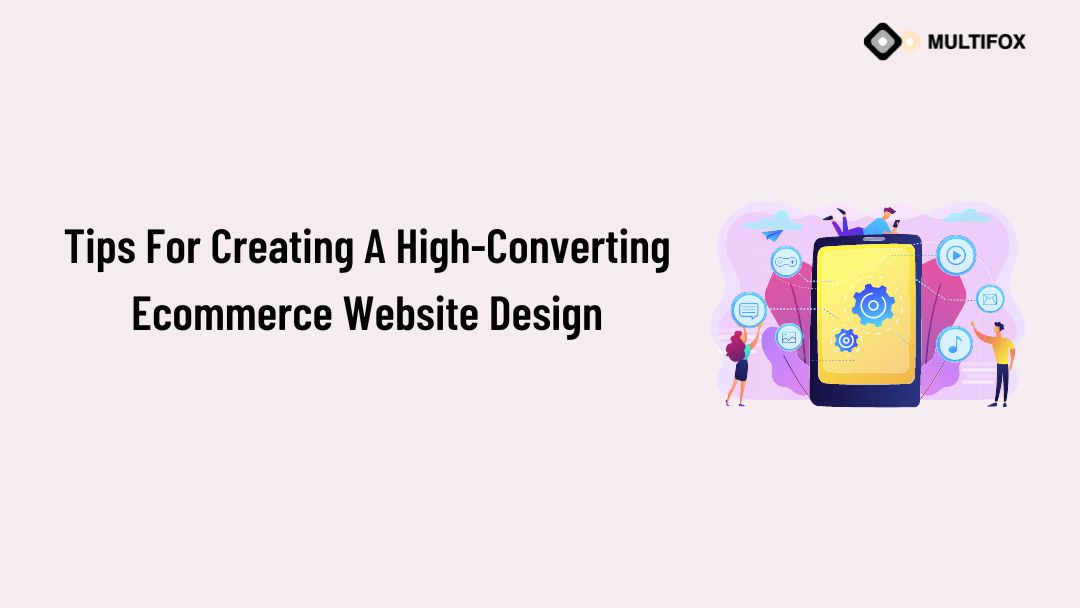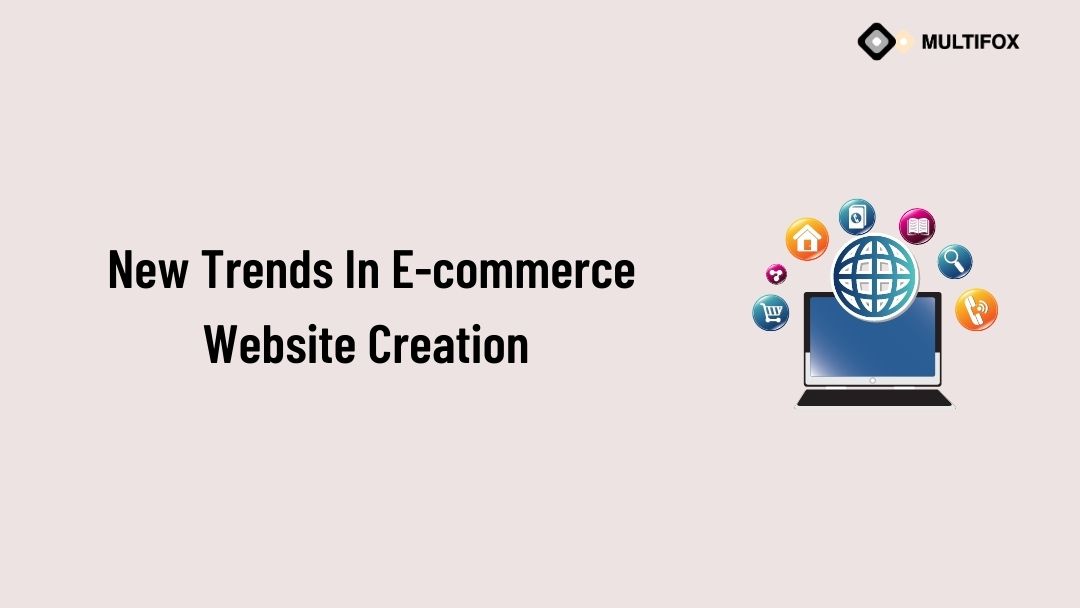Meta Description: Discover how AI is revolutionizing the e-commerce industry and enhancing the user experience. In this article, we’re going to talk about the...
Table of Contents
Creating A High-Converting ECommerce Website Design
Looking to Create a High-Converting eCommerce Website Design Create an e-commerce website that stands out and drives conversions. Then make sure to check out our tips that will help you take your website to the next level!
When somebody talks about eCommerce website design, how do you picture it? Obviously, our design vision may be different, but most certainly, it will be something that grabs the attention of customers and makes them want to make a purchase in some magical way.
Of course, there’s no magic involved when it comes to websites, and the only reason why one website converts, and another one doesn’t is that only one of them was designed with a conversion path in mind.
Wonder how to create an e-commerce website that stands out in the market and attracts customers like bees to a honeypot? If the answer is yes, look no further. In this article, we’ll share with you a few practical tips that will help you build a killer website that appeals to people and converts.
Is There a Difference Between An High-Converting ECommerce Website Design and Other Types?
While all websites out there aim to attract visitors, they are not the same, and this is especially true for e-commerce websites created with the intent to generate revenue through online sales. So, how are they different? And how can you tell that a website you happen upon is an e-commerce site? Here are just a few giveaways:
- Focus on the product display. E-commerce websites tend to showcase their products on the homepage, while other websites may use a snippet of informational text or some kind of intro about a brand and/or its services to capture the attention of visitors.
- Checkout functionality. Another obvious sign that you have an e-commerce website in front of you is the presence of a shopping cart.
- Payment gateway integration. In addition, e-commerce websites use payment processing software to secure various payment options for their customers.
- Shipping management. Most e-commerce websites would also include a separate shipping management functionality, allowing their users to manage their orders, track shipments, and handle returns and exchanges.
- Security. Finally, since customers share their personal and payment details, these websites are encrypted.
However, as you can guess, having a shopping cart and products showcased on the home page is not enough to secure sales. There’s something more to Creating a high-converting e-commerce website Design that drives sales. And further in the article, we’ll look more closely at what exactly it is.
Steps To Build A High-Converting ECommerce Website Design
Don’t want to be just the next average website with visitors who make a purchase once in a blue moon? If so, make sure to follow the tips that we share with you, and you’ll take your e-commerce website to the next level.
1.Use CTAs
While it may seem obvious that websites should have buttons like “Buy”, “Order”, or “Add to Cart”, it’s not uncommon to see them placed somewhere at the bottom of the page or in other awkward locations, where they simply can’t be found.
You’ll be surprised, but there are also websites that don’t have these buttons at all. Instead, they expect their visitors to call them for details. We don’t know how many people actually bother taking this long route as there are plenty of websites that display their prices clearly, but if you want to drive sales, this is not the way to go.
Your CTA buttons should be clearly seen on the website. They guide your users through the website, pointing them in the right direction up to the final stage where they can pay for a product or service. For this reason, they should be placed in plain sight and, preferably, in several locations so that customers can’t miss them.
For example, you could put the “Buy” button right next to the product and then duplicate it at the end of the product description. Of course, it would have to be put on the product page as well.
However, it’s not only the location of buttons that is important when it comes to CTAs. It’s also the colors and consistency. Use contrasting colors to make sure that your call-to-action is easy to read. Don’t make the text too long. Also, if you call it something, make sure that it’s the same everywhere on your website. This will help make navigation for your customers easier.
A software testing company can also ensure that the CTA buttons are functioning properly and user-friendly, as part of their quality assurance services.
2. Make Your Offering Time-Sensitive
Making your offer time-sensitive is a tactic that always works and can be applied to different elements on the site. You could place a banner with a discount right in the center of the home page, for example. This will grab attention and make more people want to check out the offer.
Alternatively, you could place a timer that counts down the time until the end of the sale. By creating a sense of urgency for your customers, it would encourage more people to make a purchase and result in an increased number of sales.
Overall, there are many ways to make a regular offer sound more enticing and persuasive. In fact, it’s often enough just to change the word “Here” to “Now” in your call to action to make a difference. Try it and see for yourself!
If you are engaged in the travel business, another effective strategy to make your offers more compelling is to integrate innovative travel software solutions that provide real-time updates on prices, availability, and exclusive deals. By leveraging such technology, you can enhance the sense of urgency and create a seamless booking experience for your customers, leading to higher conversion rates.
3. Streamline Checkout Process
One of the main reasons some websites don’t convert is because their checkout process involves a lot of extra steps or is just complicated. Could you integrate a one-click checkout? If yes, then you should certainly do it. This will help streamline the entire process and ultimately boost conversions.
Even if integrating the one-click checkout is not an option, there are ways to make the user journey easier. Take a look at your web forms. Do they not look confusing? Are all fields easy to complete? And aren’t there too many fields?
Basically, all you need to know is your customer’s name, contact details, and shipping address, so this is the key input information you need. Any other details you may have added on the form in the hope to obtain more data for marketing analysis can be collected at other times and through other means.
For businesses looking to enhance their website’s user experience, white label WordPress development services can provide customized solutions that can help streamline processes and improve conversion rates. Whether it’s integrating a one-click checkout or optimizing web forms, white label WordPress development can provide businesses with the tools they need to create a seamless and user-friendly website.
4. Offer Multiple Payment Options
Long gone are the days when people only used debit cards to pay online. Today, digital wallets are all the rage, to say nothing of cryptocurrency. So, it’s essential to offer a variety of payment options, including credit cards, PayPal, Apple Pay, Google Pay, and more, to cater to the payment preferences of a wider range of customers.
However, this doesn’t mean that you should offer all of them. This will overload the site and won’t look visually appealing. Instead, it’s better to choose 3-5 top options that are the most popular with users and place them right next to the CTA button.
Moreover, when setting up an e-commerce platform, it’s crucial to ensure that your payment gateway is integrated with a reliable payment processor, and this is where ecommerce software development services can help.
By doing so, you’ll be able to both enhance the visual appeal of the product page and increase your sales.
5. Use Product Reviews
Another great way to boost conversions is with product reviews. It has been statistically proven that people are more likely to make a purchasing decision after reading positive customer reviews, so the best thing to do is to place a section with product reviews right next to the products or just below.
Sure, you’d first need to make sure that your customers have an opportunity to leave comments and rate products.
6. Make Sure Your Website Is Responsive
It could be the case that the only reason your website isn’t getting you the conversions you want is that it’s not been optimized for mobile devices. Did you know that over 50% of purchases in 2022 were made on a smartphone in the US alone? So, if your website design isn’t responsive, you’re clearly missing out half of the traffic.
Another reason could be a poor mobile design. If it’s got too much imagery, the chance is high that some users may experience a slowdown in the work of your website, resulting in missed new sign-ups and conversions.
Aside from that, the content itself should be easily read. As more users now work with smaller smartphone screens, it’s important to keep it neat, clean, and concise. At the end of the day, the goal of an e-commerce website is to sell, so too much text just isn’t necessary.
7. ECommerce Website Design Layout
Last but not least, what sets a great e-commerce website design apart from many others is that it has a rather simple – or even minimalist – layout. It has just essential features that are necessary for a seamless shopping experience and minimum “noise” in the background so nothing distracts people from the main goal – making a purchase.
If you think that your website looks somewhat crowded, redesigning can do the trick. Here are a few rules for creating an effective e-commerce website design:
- There shouldn’t be any extra elements on the product pages that may take the customers’ attention away from the main product.
- The imagery should be big and easy to distinguish.
- If any text is used, it should be short and concise. Also, use no more than two lines for product descriptions.
- CTA buttons should contrast with the rest of the page and have a clear and direct message that is consistently used throughout the site.
- Anything that can be removed from the site should be removed.
- Finally, test your site on various devices to make sure that a customer’s journey from the moment they arrive on your website to purchase is smooth and streamlined.
Conclusion
To wrap up, creating a high-converting e-commerce website design requires a combination of things, including a clear and visually appealing layout, intuitive navigation, effective CTAs, and a focus on mobile usability and functionality.
It’s also about simplicity and consistency. Creating a high-converting e-commerce website design.The fewer steps involved in the process, the more likely the customer is to make a purchase. So, if there’s anything on the user’s journey that serves no useful function, it should be removed.
By following the tips we’ve shared in this article, you will create a website that not only stands out in a crowded market but also attracts and retains customers over the long term.
Author bio:
Dmytro Sokhach is an entrepreneur and the 6-Figure Flipper Club member. Founded Admix Global (web agency) that builds websites, makes them profitable, and sells them as business.
AlsoRead:


